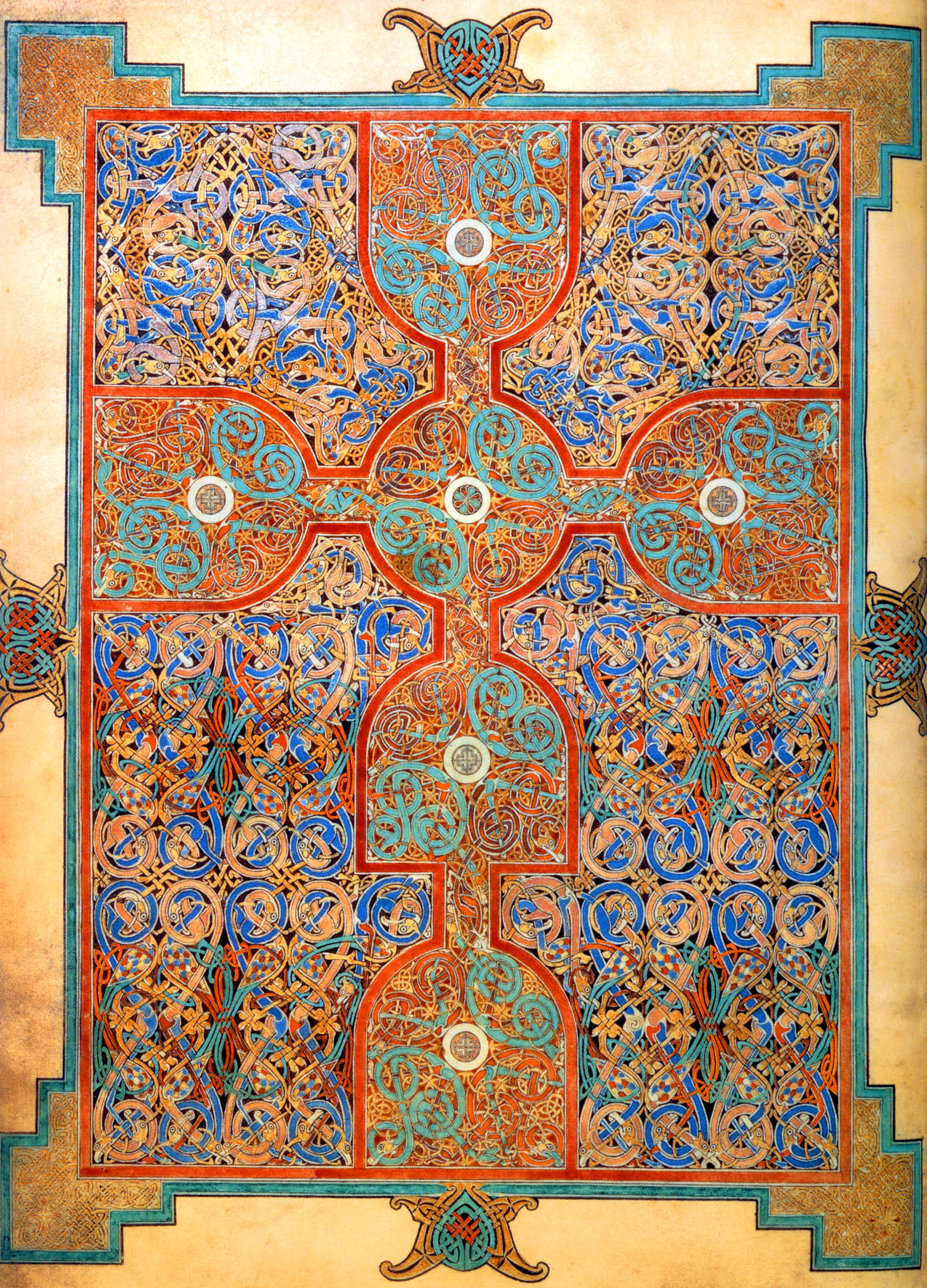
“The various Teutonic tribes, the Goths, the Vandals, the Saxons, the Danes and the Vikings, who swept through Europe raiding and pillaging, were considered barbarians by those who valued Greek and Roman achievements in literature and art. In a sense they certainly were barbarians, but this need not mean that they had no feeling for beauty, no art of their own. They had skilled craftsmen experienced in finely wrought metalwork, and excellent woodcarvers… They loved complicated patterns which included the twisted bodies of dragons, or birds mysteriously interlaced…
“The monks and missionaries of Celtic Ireland and Saxon England tried to apply the traditions of these northern craftsmen to the tasks of Christian art… [T]he most amazing monuments to their success are some of the manuscripts made in England and Ireland during the seventh and eighth centuries.”
Ernst H. Gombrich, “Chapter 8: Western Art in the Melting Pot,” The Story of Art, 15th edition

Look at this while listening to Celtic music. You will surely be transported into a rather wild land of beauty… Not barbarism – but wild beauty. I bet you know where that’s from – eh, Samantha?
I bet you know where that’s from – eh, Samantha?
Let me just say that I love the intricate patterns and almost sensual twisting of the animal figures… It’s like … “A magic web of colors gay…”
It’s so beautiful! I’m thinking to correlate some picture study with early British history, for Year 1 students. The Bayeux Tapestry, too, is worth studying!
If you post something on the Bayeux Tapestry, I would be very interested, because Bayeux does nothing to me but make me laugh! The figures are so cartoon-like, I think it’s hilarious! I cannot concentrate on its historical value when I find it so … funny.
It is a bit funny! Of the Bayeux Tapestry, Gombrich wrote, “It is true that the arms and fingers look rather quaint and that all the figures in the story are strange little manikins which are not drawn with the assurance of the Assyrian or Roman chroniclers. When the medieval artist of this period had no model to copy, he drew rather like a child. It is easy to smile at him, but by no means easy to do what he did. He tells the epic with such economy of means, and with such concentration on what seemed important to him, and the final result remains more memorable than the realistic accounts of our war reporters and newsreel men.”